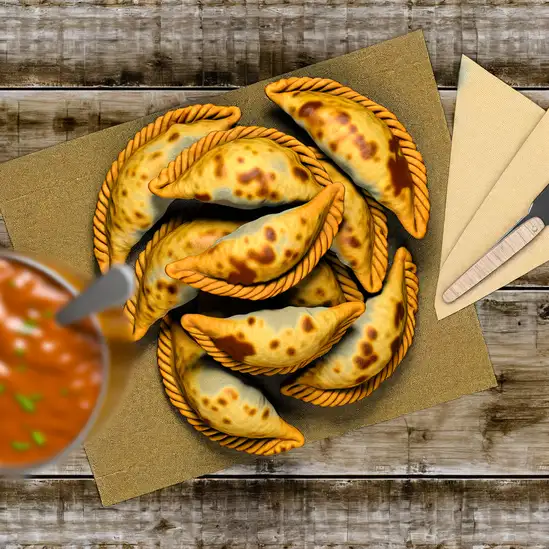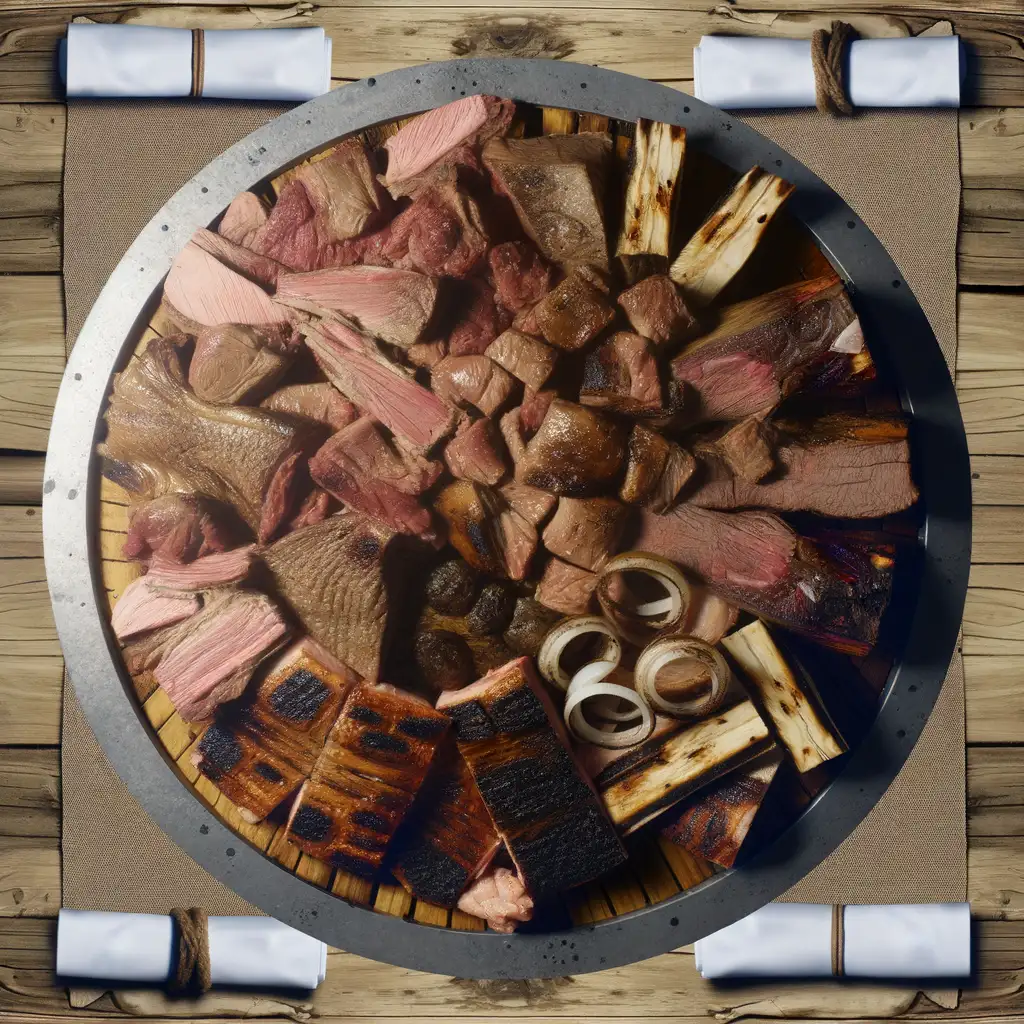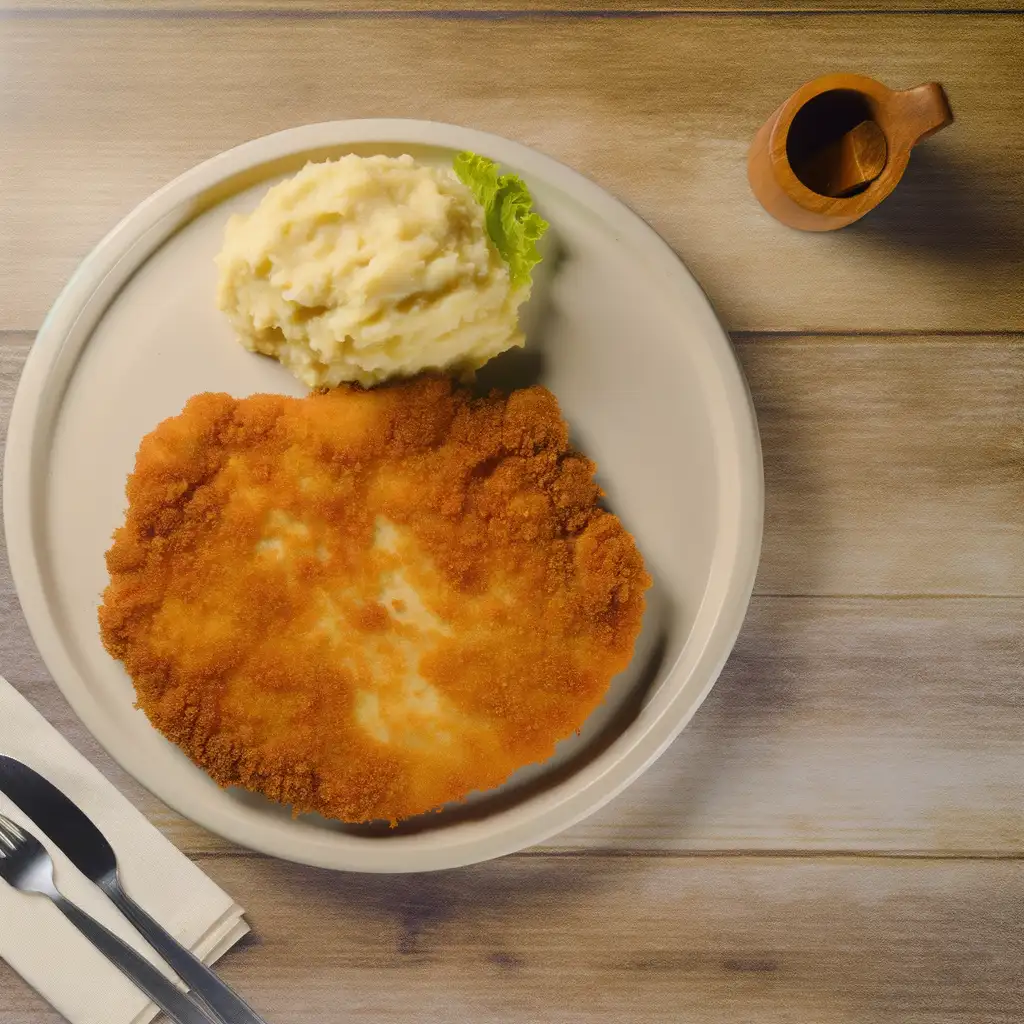



If you ever find yourself wandering through Argentina’s Mendoza province,the Departamento de San Rafael is a place that wraps you in warmth the moment you arrive. It’s not just the sun-drenched vineyards or the rugged Andes backdrop—it’s the easygoing rhythm of life here. Picture afternoons spent sipping Malbec under wide,open skies,the air tinged with the earthy scent of grapevines and fresh mountain breeze. The town pulses gently with a mix of old-world charm and lively local spirit,where neighbors greet each other with genuine smiles and the streets hum softly with the chatter of café patrons. Walking through San Rafael,you’ll catch the vibrant colors of street art blending with colonial architecture,and the aroma of freshly baked empanadas wafting from corner bakeries. The soundscape is a comforting blend of laughter,clinking glasses,and the occasional strum of a guitar from a nearby plaza. It’s a place where time slows just enough for you to savor every bite of the rich,hearty cuisine—think tender grilled meats paired with robust wines that tell stories of the land. What really sets San Rafael apart is its connection to nature. Beyond the vineyards,the dramatic landscapes invite you to explore waterfalls,hot springs,and winding trails that reveal breathtaking views. Whether you’re chasing adventure or simply craving a peaceful escape,this department offers a genuine slice of Argentine life,full of warmth,flavor,and a welcoming spirit that stays with you long after you leave.
The information on this page is currently being reviewed by Tripkliq and should be used as a guide only
Eng word: Hello
Eng pronunciation: OH-lah
Local language: Hola
Eng word: Goodbye
Eng pronunciation: ah-DYOS
Local language: Adiós
Eng word: Thank you
Eng pronunciation: GRAH-syahs
Local language: Gracias
Eng word: How much
Eng pronunciation: KWAN-toh KWEH-stah
Local language: ¿Cuánto cuesta?
Eng word: Toilet
Eng pronunciation: BAH-nyoh
Local language: Baño
Eng word: Help me
Eng pronunciation: ah-YOO-dah-meh
Local language: Ayúdame
Eng word: Yes
Eng pronunciation: SEE
Local language: Sí
Eng word: No
Eng pronunciation: NO
Local language: No
Eng word: Excuse me
Eng pronunciation: pehr-DOHN
Local language: Perdón
San Rafael was officially founded on April 2,1805, as a strategic settlement to protect the southern frontier of the Mendoza Province. It has since grown into a vibrant city known for its natural beauty and cultural heritage.
The Atuel River has been vital to San Rafael's development, providing water for agriculture through an extensive irrigation system. This system, established in the 19th century, transformed the region into a fertile agricultural hub.
In the late 19th and early 20th centuries, European immigrants, particularly from Italy and Spain, settled in San Rafael. They brought their traditions, contributing to the city's rich cultural diversity and agricultural expertise.
San Rafael is one of Argentina's premier wine-producing regions. The introduction of vineyards in the late 19th century laid the foundation for its reputation as a producer of high-quality Malbec and other wines.
Constructed in the mid-20th century, the Nihuil Dam is a significant engineering achievement. It provides hydroelectric power and irrigation, while also creating a stunning reservoir that attracts tourists for water sports and fishing.
Valle Grande, a breathtaking canyon and reservoir, became a major tourist attraction in the 20th century. It offers opportunities for adventure sports, such as rafting and hiking, and showcases the natural beauty of the region.
The arrival of the railway in the early 20th century connected San Rafael to other parts of Argentina, boosting trade and facilitating the transport of agricultural products, including its renowned wines.
The Cathedral of San Rafael Arcángel, with its iconic tower, is a symbol of the city. Built in the early 20th century, it reflects the city's strong religious and architectural heritage.
Completed in the 1980s, Los Reyunos Dam is another marvel of engineering in San Rafael. The reservoir is a popular destination for fishing, boating, and enjoying the serene mountain scenery.
In Departamento de San Rafael, the most common Power Adaptor is Type C, Type I.



Savory pastries filled with a variety of ingredients, such as beef, chicken, or cheese, and baked or fried.

A traditional Argentine barbecue featuring various cuts of beef, pork, and sometimes chicken, cooked on a grill or open fire.

A hearty stew made with corn, beans, potatoes, and various meats, traditionally enjoyed during national holidays.

Breaded and fried meat cutlet, typically made from beef or chicken, often served with mashed potatoes or salad.

A sweet caramel-like spread made from slowly heating sweetened milk, commonly used in desserts and pastries.

Grilled provolone cheese, often seasoned with oregano and served as an appetizer, typically enjoyed with bread.

Buenos Aires feels like a city that’s alive in every sense — vibrant,passionate,and endlessly inviting. From the moment you step onto its bustling streets,you’re wrapped in a mix of old-world charm and modern energy. The air carries the scent of freshly baked medialunas mingling with the faint,smoky aroma of asado grilling nearby. You’ll hear the rhythmic clatter of tango dancers’ heels on cobblestones,blending with the lively chatter spilling out of cafés and the distant hum of street musicians playing soulful melodies.
Walking through neighborhoods like San Telmo or Palermo,you’ll notice the colorful murals that tell stories of the city’s rich history and rebellious spirit. The architecture is a fascinating patchwork — elegant French-style buildings stand shoulder to shoulder with vibrant street art and quirky boutiques. There’s a warmth in the way porteños (locals) greet each other,a genuine friendliness that makes you feel like you’re part of the city’s ongoing story.
And then there’s the food — oh,the food! Juicy,perfectly grilled steaks paired with Malbec that tastes like it was made just for you. Empanadas bursting with flavor,and dulce de leche desserts that melt in your mouth. Buenos Aires isn’t just a place to visit; it’s a place to savor,to dance,to lose yourself in the rhythm of life. Trust me,once you’ve wandered its streets and soaked in its spirit,you’ll carry a piece of Buenos Aires with you long after you leave.
If you ever find yourself craving a place where nature’s grandeur meets cozy,small-town charm,San Carlos de Bariloche is where you want to be. Imagine waking up to the crisp,pine-scented air,with the shimmering waters of Lake Nahuel Huapi stretching out before you,framed by snow-capped Andes peaks. The vibe here is relaxed but alive—locals and travelers alike gather in rustic cafés,their laughter mingling with the clinking of coffee cups and the rich aroma of freshly brewed Argentine espresso.
Walking through Bariloche’s streets feels like stepping into a storybook. Wooden chalets with colorful shutters line the avenues,and the scent of chocolate wafts from every corner,a nod to the city’s famous artisanal chocolatiers. You’ll hear the soft crunch of snow underfoot in winter or the gentle rustle of leaves in summer,while the distant call of birds adds a natural soundtrack to your explorations. The city pulses with a blend of European alpine influences and Patagonian spirit,creating a unique cultural tapestry that’s both warm and inviting.
What really makes Bariloche unforgettable is how it invites you to slow down and savor the moment. Whether you’re hiking through ancient forests,savoring a plate of fresh trout by the lake,or simply watching the sunset paint the mountains in shades of pink and gold,there’s a deep sense of peace here. It’s a place that stays with you long after you leave,whispering stories of wild beauty and heartfelt hospitality.
Imagine stepping into a place where the wildness of nature meets the warmth of a close-knit community—that’s Ushuaia for you. Nestled at the very tip of South America,this city feels like the edge of the world,with snow-capped mountains standing guard over the deep blue waters of the Beagle Channel. The air is crisp and fresh,carrying hints of pine and salty sea spray,and when you walk along the harbor,you can almost hear the distant call of sea lions mingling with the chatter of locals and travelers alike.
Ushuaia’s charm isn’t just in its dramatic landscapes but in its spirit. The streets hum with a quiet energy—cozy cafés filled with the rich aroma of freshly brewed coffee,small artisan shops showcasing handmade woolen goods,and restaurants where you can savor Patagonian lamb or freshly caught king crab,each bite bursting with the rugged flavors of the region. There’s a ruggedness here,sure,but also a surprising softness in the smiles of the people who’ve carved out a life in this remote corner.
What really stays with you is the sense of adventure that pulses through the city. Whether you’re gearing up for a trek through Tierra del Fuego National Park,hopping on a boat to spot penguins,or simply watching the sunset paint the sky in fiery hues,Ushuaia invites you to slow down and soak it all in. It’s a place that feels alive,raw,and deeply welcoming—like a story you’re eager to be part of.
If you ever find yourself craving a place where the wildness of nature meets the warmth of a small coastal town,Puerto Madryn in Argentina should be on your radar. The moment you arrive,there’s this fresh,salty breeze that carries the promise of adventure and calm all at once. The town itself feels laid-back but alive,with colorful buildings lining the waterfront and locals who greet you with genuine smiles and a relaxed pace that invites you to slow down and soak it all in.
Walking along the shore,you’ll hear the distant calls of sea lions and the rhythmic crashing of waves against the rugged cliffs. The air smells faintly of the ocean mixed with the earthy scent of Patagonian scrubland nearby. It’s a sensory blend that feels both invigorating and grounding. Don’t miss the chance to taste the local seafood—fresh,tender,and often paired with a glass of crisp Argentine white wine that perfectly complements the coastal flavors.
What really makes Puerto Madryn stand out is its connection to the natural world. It’s the gateway to the Valdés Peninsula,where you can witness southern right whales breaching just offshore or watch penguins waddle along the beach. The town’s character is shaped by this deep respect for the environment,and you can feel it in the way people talk about their home—with pride and a touch of awe. Visiting here isn’t just about seeing a place; it’s about feeling a rare harmony between land,sea,and community.
Imagine strolling along a sun-dappled Rambla,the salty breeze from the Río de la Plata mingling with the rich aroma of freshly brewed coffee and grilled meats wafting from nearby cafés. That’s Montevideo for you—a city that feels like a warm embrace,where the pace is unhurried but the energy hums quietly beneath the surface. It’s a place where old-world charm meets a laid-back coastal vibe,and every corner invites you to slow down and savor the moment.
Walking through Ciudad Vieja,the historic heart,you’ll hear the clatter of footsteps on cobblestones,the murmur of locals chatting over mate,and the occasional strum of a guitar from a street musician. The colorful murals and colonial architecture tell stories of a city proud of its roots yet open to creative expression. Montevideo’s markets burst with fresh produce,artisanal cheeses,and the unmistakable scent of asado grilling—Uruguay’s beloved barbecue that’s as much a social ritual as a meal.
What makes Montevideo truly special is its genuine warmth. People here have a relaxed friendliness that makes you feel like you belong,even if you’re just passing through. Whether you’re sipping a craft beer in a cozy bar or watching the sunset paint the sky over the coastline,there’s a comforting rhythm to life here that stays with you long after you leave. It’s not just a city to visit—it’s a place to experience,to breathe in,and to carry with you.
Imagine stepping into a city where the rhythm of samba pulses through the streets and the air carries a salty breeze mixed with the scent of fresh coconut water. That’s Rio de Janeiro for you—a place that feels alive in every sense. From the moment you arrive,you’re wrapped in a vibrant energy that’s both laid-back and electric. The city’s dramatic landscape,with its towering granite peaks like Sugarloaf and the iconic Christ the Redeemer statue watching over the bay,creates a stunning backdrop that’s impossible to forget.
Walking through Rio’s neighborhoods,you’ll hear the laughter of locals chatting in colorful markets,the distant beat of drums from a street party,and the waves gently crashing on golden beaches like Ipanema and Copacabana. The sun warms your skin as you sip on a caipirinha,the tangy lime and sweet sugar blending perfectly with the tropical heat. Food here is a celebration—imagine feijoada bubbling in a pot,or fresh seafood grilled right by the shore,each bite telling a story of the city’s rich culture.
What makes Rio truly special is its spirit—a mix of resilience,joy,and openness. People here embrace life with a contagious passion,whether they’re dancing during Carnival or simply sharing stories over a late-night meal. It’s a city that invites you to slow down,soak in the beauty,and join in the celebration of life. Trust me,once you’ve felt Rio’s heartbeat,it stays with you long after you leave.
Skimming devices are sometimes installed on ATMs to steal card information. Tourists are advised to use ATMs in secure locations like banks.
Tourists may book accommodations online that turn out to be nonexistent or significantly different from the advertised property.
Tourists may receive counterfeit bills as change, especially in markets or small shops. Scammers target those unfamiliar with Argentine pesos.
Vendors may sell counterfeit or low-quality goods as authentic local crafts, charging tourists high prices for items of little value.
Scammers impersonate police officers and accuse tourists of minor infractions, demanding on-the-spot fines to avoid further trouble.
Scammers pose as legitimate tour operators and offer cheap excursions or adventure activities. They may take payment upfront and then disappear or provide subpar services.
Some taxi drivers may overcharge tourists by taking longer routes or not using the meter. Others may claim the meter is broken and demand an inflated fare.
In crowded areas, pickpockets target tourists by distracting them or cutting bags to steal valuables.
Some restaurants may inflate bills for tourists by adding hidden charges or including items that were not ordered.
Street performers or individuals offering 'free' services, like shoe shining or photo opportunities, may demand payment afterward, often at exorbitant rates.
Argentina has strict laws regarding drug use and possession. The possession of small amounts of drugs for personal use has been decriminalized in some cases, but this is subject to judicial interpretation and varies by jurisdiction. In San Rafael, tourists should avoid carrying or using any illegal drugs, as penalties for possession, trafficking, or distribution can be severe. Cannabis use is not fully legalized, and public consumption is prohibited. Always adhere to local laws and regulations to avoid legal issues.
In San Rafael, Argentina, smoking is regulated under national and provincial laws. Smoking is prohibited in enclosed public spaces, workplaces, public transportation, and certain outdoor areas such as schools, hospitals, and playgrounds. Designated smoking areas may be available in some establishments, but tourists should always look for signage indicating whether smoking is allowed.
Vaping is subject to similar restrictions as smoking in San Rafael. The use of electronic cigarettes is prohibited in enclosed public spaces, workplaces, and public transportation. While vaping is less regulated than smoking, it is advisable to follow the same rules and avoid vaping in restricted areas to avoid fines or penalties.
What are other people saying about Departamento de San Rafael?
Recent Social posts about Departamento de San Rafael
There is nothing to show you for now.